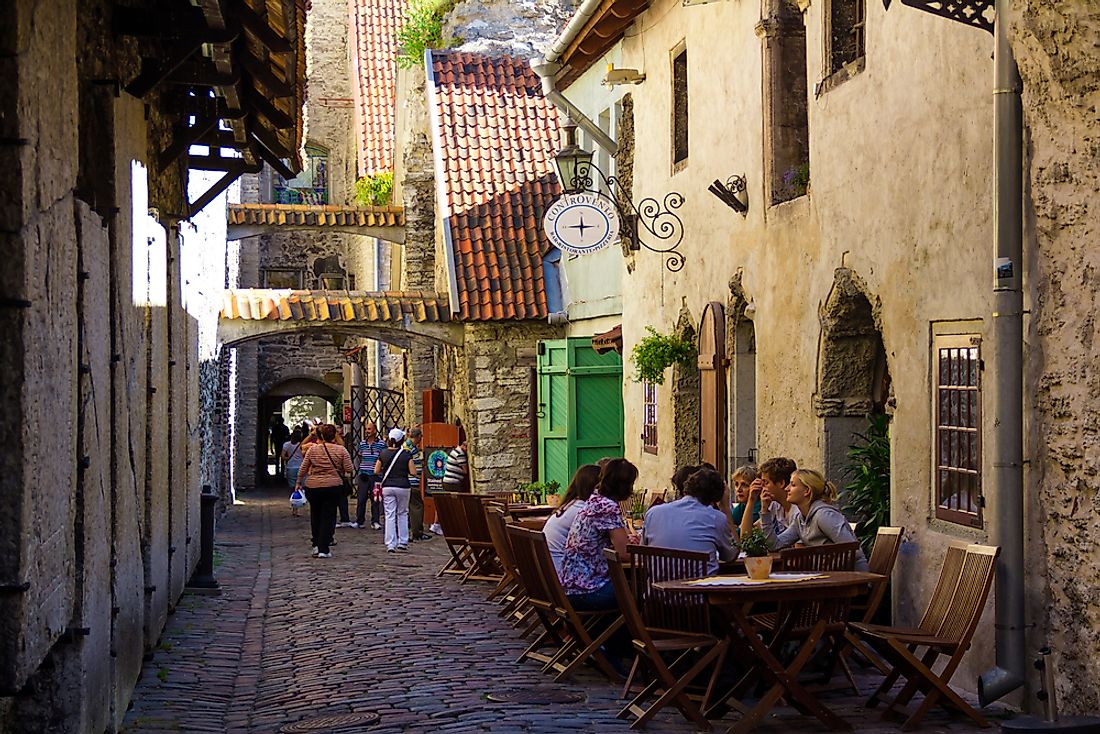Largest Ethnic Groups In Estonia

The vast majority of Estonia's residents are either ethnically Estonian or Russian. The presence of the Soviet Union and the annexation of the country contributed to the presence of the Russian ethnic group in the country. Before World War 1 the population of Estonia was relatively homogeneous. The Russians, Germans, Jewish, Poles, Finns, and other nationalities constituted around 12% of the country’s population. After the political war era, the number of ethnic Estonians increased and that of war immigrants reduced. Even so, the country’s population is low but recent studies reveal that the immigration rate is slowly exceeding the emigration, and so the in the country will increase.
Estonians
The ethnic Estonian group is predominant in all of the country’s counties, with Hiuu and Saare counties having more than 95% of their populations made up by Estonians. In 1934 before the Soviet Union, the Estonian community was around 80%, but by 1989 the population had decreased to 61.2%. This reduction resulted from the Soviet government trying to "Russify" Estonia.The purge era led to more than 60,000 ethnic Estonians killed or deported. After Estonia’s independence in 1991, the national catastrophe came to an end, and the population of ethnic Estonians increased. Today, the Estonians number 905,805, approximately 68% of the population.
Russians
During the Soviet rule, many ethnic Russians were given incentives to migrate into non-Russian states such as Estonia. As a result, the Russian population in the country increased to form the largest minority group. After Estonia gained independence in 1991, the immigration ceased, and a large number of Russians left the country. Today, the Russians are approximately 330,263 and still the most significant minorities. The presence of the Russian was influential enough that even to today, the Russian language education is taught in public and private schools. Today the integration of the Russian to Estonians has led to around 19% of Estonians attending Russian schools. There are also Russian newspapers, radio stations, Russian-based TV programs, and in general, many people are conversant with Russian.
Ukrainians
Ukrainians are the third largest ethnic group in Estonia with a population of around 23,256, which is 1.7% of the total population. The history of Ukrainians in Estonia dates back to the Soviet Union rule in Estonia, the annexation, and World War 1. The immigration of Ukrainians in the Soviet government largely contributed to their presence in the country. The majority of the Ukrainians occupy the cities of Tallinn, Parnu, Maardu, and Tartu. Ukrainians also live in the North-Eastern region of the country as a result of the chemical industry specialists and coal miners sent by the Soviet Union. Today there are Ukrainian learning institutions, political parties, and religion masses held in Ukrainian.
Belarusians
Estonia has relatively close ties with Belarus. As a result, around 12,171 Belarusians live in Estonia. The state of Estonia promotes the cultural aspirations of culture identification of the Belarusian living in the country and facilitates the development of the Belarusian community. In fact, in 2001, the cultural associations of Belarusians joined to form the Estonian Association of Belarusians.
Finnish
Estonia more closely relates to Nordic countries more than other Western European countries. Since post-independence, Estonia has had close ties with Finland. In 1999, the foreign minister declared Estonia as a Nordic country, and the president in 2006 confirmed the declaration. As a result, three-quarters of the external investment in the country is from Nordic countries. In return, Estonia sends 42% of all its exports to Sweden and Finland. The unity of the two nations has facilitated the growth of the Finnish community in Estonia to around 7,659, making them one of the largest minorities in the country.
Germans
The presence of Germans in Estonia dates back to the 1970s, and even earlier many came following World War I. In that era, the Imperial German Army occupied the islands of Saaremaa, Hiiumaa, and Muhu. The Germans drove the Russians out of Estonia but after the German Revolution in 1918, Russian took over Estonia as the Germans left. However, Hitler in 1939 destroyed the German Baltic Communities reducing the population of Germans in Estonia. Today, Germans are around 1,913 in the country, one of the smallest minority groups. The little population of the Germans in the country has fully assimilated in the Estonian culture. The ethnic Estonians and the Germans have learned to coexist and assimilated each other’s culture, and small traces of the German language exist in the country.
Other Minorities in Estonia
The ethnic minority groups of Estonia came into the country predominately during the Soviet Union's rule. These include the Tartars who number 1,981, Latvians (2,198), Jewish (2,023), Lithuanians (1,882), and Poles (1,747). Most of them are immigrants from their home countries. Despite the years of the political war era in the 20th Century, Estonian is a multiethnic country. The constitution protects all ethnic groups in the country. There is Ethnic tolerance among the people, and a majority of citizens integrate with the natives by recognizing the similarities between their individual countries. Despite the measures to unify the country, it lacks immigration rules that contributes to the small population. As a result, Estonia records one of the lowest populations in the world with around 1.3 million citizens.
Largest Ethnic Groups In Estonia
| Rank | Ethnic Background | Number Living in Estonia, 2016 |
|---|---|---|
| 1 | Estonian | 905,805 |
| 2 | Russian | 330,263 |
| 3 | Ukrainian | 23,256 |
| 4 | Belarusian | 12,171 |
| 5 | Finnish | 7,659 |
| 6 | Tatars | 1,981 |
| 7 | Latvians | 2,198 |
| 8 | Jewish | 2,023 |
| 9 | German | 1,913 |
| 10 11 | Lithuanian Polish | 1,882 1,747 |











